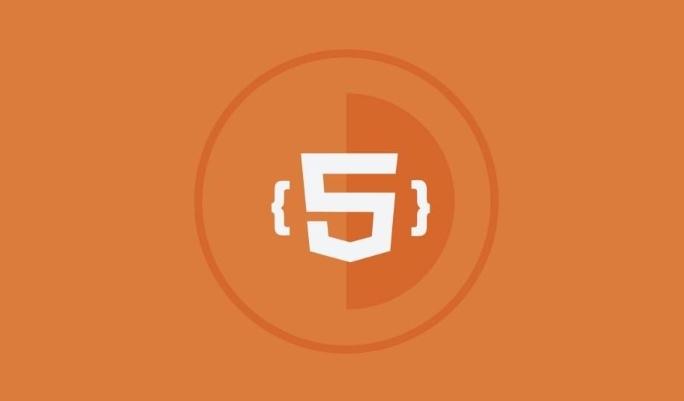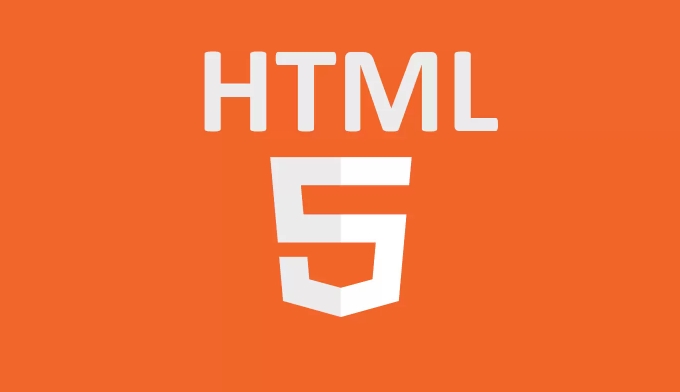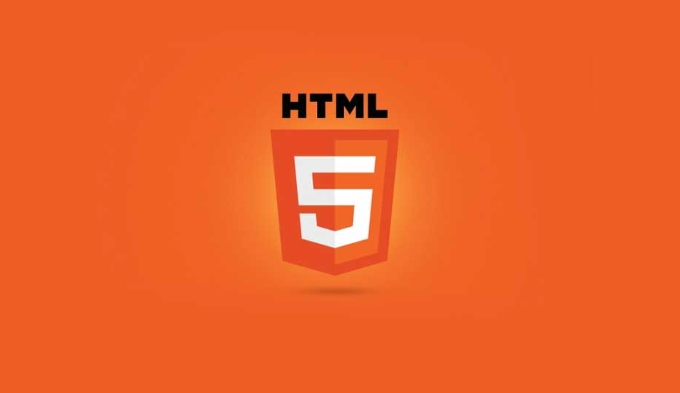WebSockets is a key technology for real-time applications, providing persistent two-way communications that are more efficient than polling. 1. It is an HTML5 protocol, allowing clients and servers to send data to each other at any time; 2. When using it, the front-end establishes connections and listens to events through several lines of code, and the back-end needs to cooperate with a library that supports WebSocket; 3. Application scenarios include chat rooms, stock updates, online games, collaborative documents, etc.; 4. When using it, pay attention to the cross-domain, reconnection mechanism, and message formats unified into JSON and encryption protocol wss://.

Real-time applications are very common now, such as chat rooms, online collaboration tools, real-time data monitoring panels, etc. To implement these features, HTML5 WebSockets is a very practical technical choice. It provides a durable, bidirectional communication channel that is more efficient and responsive than traditional polling methods.

What are WebSockets?
WebSockets is a network communication protocol provided by HTML5, allowing a long-term connection between the client and the server to conduct two-way data transmission through this connection. Unlike HTTP request-response mode, once a WebSocket connection is established, both parties can send data at any time.
To give a simple example: the stock price you see on a web page is updated in real time, and it is likely that WebSocket is working. It does not require the browser to constantly request new data, but it pushes it directly when the server updates.

How to use WebSockets in a project?
To use WebSockets on the front end, you only need a few lines of code to establish the connection:
const socket = new WebSocket('ws://example.com/socket');
You can then listen for connection opening, receiving messages, error handling, and connection closing events:

-
socket.onopen: Triggered when the connection is successfully established. -
socket.onmessage: fired when a message is received from the server. -
socket.onerror: Triggered when an error occurs. -
socket.onclose: Triggered when the connection is closed.
Sending messages to the server is also very simple:
socket.send('Hello Server!');
It should be noted that the server side also needs to support the WebSocket protocol. Common backend technologies such as Node.js (with ws library), Python websockets or Django Channels can be easily implemented.
Frequently Asked Questions and Precautions
Although WebSockets is powerful, there are some things that are easy to ignore in actual use:
- Cross-domain issues : WebSocket is also restricted by the same-origin policy, and requires the server to configure CORS or use a proxy to resolve it.
- Connection remains : The connection may be interrupted when the network is unstable. It is recommended to add a reconnection mechanism.
- Message format : It is recommended to use JSON format to pass data uniformly to facilitate front-end parsing.
- Security : Use the encrypted
wss://protocol to prevent man-in-the-middle attacks.
If your application is deployed on HTTPS, WebSocket must also use wss:// , otherwise the browser will block the connection.
Examples of practical application scenarios
In addition to the aforementioned live chat and stock market, WebSocket is also suitable for:
- Player status synchronization in online games
- Collaborative document editing (such as multiple people editing Google Docs at the same time)
- Real-time notification system (such as message push from social platforms)
This kind of scenario has one thing in common: data needs to flow quickly and continuously between clients and servers, and WebSocket just satisfies this.
Basically, that's not complicated to use, but it can indeed bring about an improvement in experience. As long as the front and back ends are coordinated, it is not difficult to achieve a true real-time function.
The above is the detailed content of Building Real-time Apps with HTML5 WebSockets. For more information, please follow other related articles on the PHP Chinese website!

Hot AI Tools

Undress AI Tool
Undress images for free

Undresser.AI Undress
AI-powered app for creating realistic nude photos

AI Clothes Remover
Online AI tool for removing clothes from photos.

Clothoff.io
AI clothes remover

Video Face Swap
Swap faces in any video effortlessly with our completely free AI face swap tool!

Hot Article

Hot Tools

Notepad++7.3.1
Easy-to-use and free code editor

SublimeText3 Chinese version
Chinese version, very easy to use

Zend Studio 13.0.1
Powerful PHP integrated development environment

Dreamweaver CS6
Visual web development tools

SublimeText3 Mac version
God-level code editing software (SublimeText3)

Hot Topics
 Audio and Video: HTML5 VS Youtube Embedding
Jun 19, 2025 am 12:51 AM
Audio and Video: HTML5 VS Youtube Embedding
Jun 19, 2025 am 12:51 AM
HTML5isbetterforcontrolandcustomization,whileYouTubeisbetterforeaseandperformance.1)HTML5allowsfortailoreduserexperiencesbutrequiresmanagingcodecsandcompatibility.2)YouTubeofferssimpleembeddingwithoptimizedperformancebutlimitscontroloverappearanceand
 Adding drag and drop functionality using the HTML5 Drag and Drop API.
Jul 05, 2025 am 02:43 AM
Adding drag and drop functionality using the HTML5 Drag and Drop API.
Jul 05, 2025 am 02:43 AM
The way to add drag and drop functionality to a web page is to use HTML5's DragandDrop API, which is natively supported without additional libraries. The specific steps are as follows: 1. Set the element draggable="true" to enable drag; 2. Listen to dragstart, dragover, drop and dragend events; 3. Set data in dragstart, block default behavior in dragover, and handle logic in drop. In addition, element movement can be achieved through appendChild and file upload can be achieved through e.dataTransfer.files. Note: preventDefault must be called
 Audio and Video: can i record it?
Jun 14, 2025 am 12:15 AM
Audio and Video: can i record it?
Jun 14, 2025 am 12:15 AM
Yes,youcanrecordaudioandvideo.Here'show:1)Foraudio,useasoundcheckscripttofindthequietestspotandtestlevels.2)Forvideo,useOpenCVtomonitorbrightnessandadjustlighting.3)Torecordbothsimultaneously,usethreadinginPythonforsynchronization,oroptforuser-friend
 Adding Audio and Video to HTML: Best Practices and Examples
Jun 13, 2025 am 12:01 AM
Adding Audio and Video to HTML: Best Practices and Examples
Jun 13, 2025 am 12:01 AM
Use and elements to add audio and video to HTML. 1) Use elements to embed audio, make sure to include controls attributes and alternate text. 2) Use elements to embed video, set width and height attributes, and provide multiple video sources to ensure compatibility. 3) Add subtitles to improve accessibility. 4) Optimize performance through adaptive bit rate streaming and delayed loading. 5) Avoid automatic playback unless muted, ensuring user control and a clear interface.
 What is the purpose of the input type='range'?
Jun 23, 2025 am 12:17 AM
What is the purpose of the input type='range'?
Jun 23, 2025 am 12:17 AM
inputtype="range" is used to create a slider control, allowing the user to select a value from a predefined range. 1. It is mainly suitable for scenes where values ??need to be selected intuitively, such as adjusting volume, brightness or scoring systems; 2. The basic structure includes min, max and step attributes, which set the minimum value, maximum value and step size respectively; 3. This value can be obtained and used in real time through JavaScript to improve the interactive experience; 4. It is recommended to display the current value and pay attention to accessibility and browser compatibility issues when using it.
 How can you animate an SVG with CSS?
Jun 30, 2025 am 02:06 AM
How can you animate an SVG with CSS?
Jun 30, 2025 am 02:06 AM
AnimatingSVGwithCSSispossibleusingkeyframesforbasicanimationsandtransitionsforinteractiveeffects.1.Use@keyframestodefineanimationstagesforpropertieslikescale,opacity,andcolor.2.ApplytheanimationtoSVGelementssuchas,,orviaCSSclasses.3.Forhoverorstate-b
 HTML audio and video: Examples
Jun 19, 2025 am 12:54 AM
HTML audio and video: Examples
Jun 19, 2025 am 12:54 AM
Audio and video elements in HTML can improve the dynamics and user experience of web pages. 1. Embed audio files using elements and realize automatic and loop playback of background music through autoplay and loop properties. 2. Use elements to embed video files, set width and height and controls properties, and provide multiple formats to ensure browser compatibility.
 What is WebRTC and what are its main use cases?
Jun 24, 2025 am 12:47 AM
What is WebRTC and what are its main use cases?
Jun 24, 2025 am 12:47 AM
WebRTC is a free, open source technology that supports real-time communication between browsers and devices. It realizes audio and video capture, encoding and point-to-point transmission through built-in API, without plug-ins. Its working principle includes: 1. The browser captures audio and video input; 2. The data is encoded and transmitted directly to another browser through a security protocol; 3. The signaling server assists in the initial connection but does not participate in media transmission; 4. The connection is established to achieve low-latency direct communication. The main application scenarios are: 1. Video conferencing (such as GoogleMeet, Jitsi); 2. Customer service voice/video chat; 3. Online games and collaborative applications; 4. IoT and real-time monitoring. Its advantages are cross-platform compatibility, no download required, default encryption and low latency, suitable for point-to-point communication






